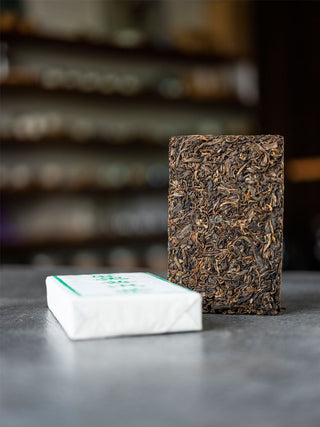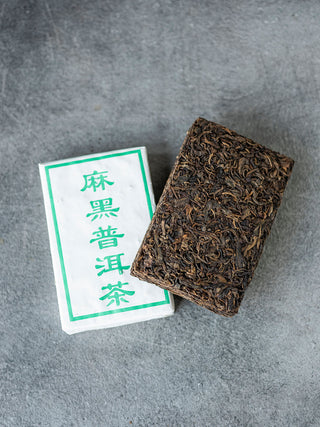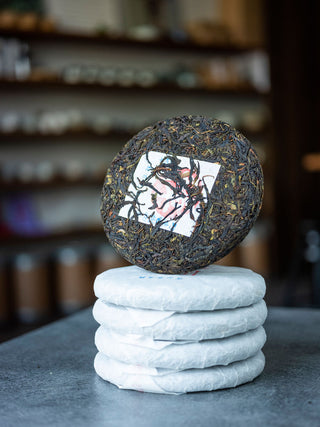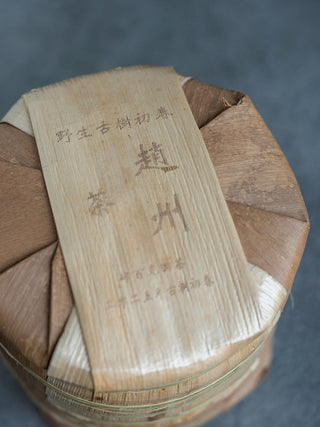Péter Galambos talks about Chinese teas and customs 4/4
The story of shu puer 熟普洱 tea has started in the 1970s during the Cultural Revolution when China did not have many products to sell abroad. Meanwhile, in Hong Kong, the aged puer was highly popular. This aged puer had a special taste due to the weather there. The high humidity of the region also made tea age faster. After two years of storing any tea in such conditions, it would ferment by itself. This kind of tea flavor was favored in Hong Kong. This shows that any judgment of a product is always influenced by local culture.
Since Hong Kong was an important market for China, and people in Hong Kong preferred the aged puer taste, an idea appeared to produce aged style puer. In Hunnan tea factories Chinese tea specialists started to develop the desired taste. On a side note, the dark tea that Tibetans drink does not have the same taste as the Hong Kong style. Hong Kong people think they need to store fresh tea for 10-20 years to satisfactorily develop the wanted taste of the tea. People in Malaysia think the same. Actually, Malaysia is the country where you can find really old teas, because the natural conditions, especially the high humidity, are ideal for aging tea. This aged tea taste became the goal of the Hunnan tea factories in China, and they tried to develop it from dark tea.
Fermentation of tea leaves means that the leaves are left to compost in a bacterial-triggered process. They pile the leaves and make them wet. Fermentation happens due to the accumulated heat and the controlled wetness. 10-15 days are enough to ferment dark tea but to produce the Hong Kong-style taste it is necessary to have longer fermentation. If it is a handmade puer, the piles of leaves are 50-100 kilograms. However, if it is a factory-made puer, then the quantity is even larger. At the end of the process, they put the leaves out to dry in the sun. This is the final stage. People say that for sheng puer the tea leaves are the most important, for shu puer, it is the water that they use during the fermentation process.
Shu puer and sheng puer are both good teas, but they differ greatly.
If it is a young sheng cha 生茶, the place of origin and the procedure matters. If the young sheng tea leaves are not well-produced, then the taste can be bitter or unpleasant. Sheng puer manufacturing involves several steps, but altogether it is not a complicated process. First, they put the leaves on the sun to dry for 1-2 hours, this is the stage of withering (tan jing 攤菁). The second step is stir-frying. It is the so-called killing green (shaqing 殺青) stage which evaporates most of the water from the leaves, almost kills all the enzyme activity, and stops the oxidation. The next step is the rolling (rou nian 揉捻) to enhance the taste of the tea. The final step is the drying (gan zao 乾躁) which gives the final shape of the leaves. Of course, the details matter a lot, such as the length of the frying, the height of the temperature, and so forth. Good quality tea is handmade which means they fry the leaves in a wok for 15-20 minutes. Tea experts from Guangdong or Fujian prefer the greener taste, so they fry the leaves longer, 30-40 minutes. After this longer frying the taste of the tea will be very fresh, almost like a green tea, but these teas lose their power after a few years, like green teas.
Rolling is also important because this stage is all about taste. The rolling breaks down the structures inside and outside of the leaf cells. If the rolling is too strong, then the taste will be too strong, unpleasant, and not harmonious. The last stage is drying which requires sunny weather. If the producers are not lucky and it is raining, then they put the leaves into bamboo baskets and bring them into the house. Unfortunately, the tea will absorb all the smells of the house, such as cooking and the smoky smell of firewood. The smoky, bad taste of sheng tea may show that the tea-making process was not very good. But there are a lot of styles, some teamaker prefers the smoky tastes. Sometimes big factories use smoky taste to cover the poorer qualities of the leaves.
Good tea is good by itself, no need to add anything at all.
They say that sheng starts to decline only after 100 years of aging, but the quality is constantly rising in the first 100 years. There are two schools of thought regarding the age of the tea, those who prefer fresh tea and those who prefer old tea. I like fresh tea, especially when it has a kind of fruity taste. It can be really great. After 1-2 years this taste disappears, and there will be a neutral stage when the tea is not so fresh anymore, but it does not have the characteristic of depth either. After five years the character of aged tea starts to show up, and the taste will be interesting again.
Sheng puer is a “living” thing that has a very interesting dynamic. During periods of great heat, it is difficult to say anything about the taste of a sheng puer, because this is the time of the changing. When winter comes, the tastefully develops. This shows that a sheng puer is always changing in terms of taste and terms of quality. While it can happen that the tea has a more neutral period, a new and exciting taste will appear afterward. In general, we can say that it takes 10 years for sheng puer mature enough, and after each year adds to the quality of the tea. The main quality of these teas is the body effect. They can cause very interesting body sensations with strong, deep characteristics.
If the tea is older than 40-50 years, the taste is irrelevant. It almost tastes like a wet coffin or a rotten tree from the forest, but the effect is incredible! After 1-2 cups of such tea, you can experience a different state of mind. You won’t even know what happened, but the effect goes through the whole body. Experienced tea drinkers say that in a case of an old sheng puer, we don’t drink the taste, we drink the effect. You need to get into the mood to feel the effect. It is a bit similar to the experiment when Joshua Bell – the worldwide famous violinist – was playing in the Washington DC metro and no one stopped to listen to him. The same night he gave a concert, and the cheapest ticket was 1000 dollars. If you drink tea, you also need to have a calmer environment, a bit more focused mental state. You need to give a chance to the tea to reveal itself. Sheng puer has this amazing dimension that is hard to believe. This subtle experience is almost like a meditation experience. For me, this is the greatest value of sheng puer.
This essay is based on a Galambos Péter & Varjasi Géza Buddha FM radio interview.
Transcribed & translated: Keller Mirella
Photos: Tálos Gábor
We published this interview in four different sections. You can find the links below.
-
Budapest – Beijing – Tibet
Péter Galambos talks about Chinese teas and tea culture 4/1 -
China and the various types of tea
Péter Galambos talks about Chinese teas and tea culture 4/2 -
Story of the Lao Banzhang tea
Péter Galambos talks about Chinese teas and customs 4/3














